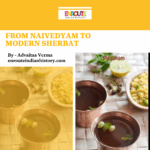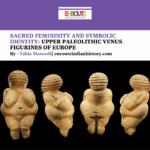Article By EIH Art Researcher
Juhi Mathur
- Written in the second half of the third century CE, Kamasutra is a treatise on love. The authorship is credited to Vatsyayana, who wrote the text in Sanskrit, a literary language of the time.
- The text of the Kamasutra provides us with ample knowledge about relationships and the complexity of pleasure.
- We often associate Kam sutra solely with sexual pleasures and look at it as a scandalous source instead of concentrating on its pathbreaking notions of female pleasure, and the autonomy of women in relationships. Vatsayana has spoken about the importance of sexual pleasure and how the act itself is to derive pleasure.
- It has described in rigorous detail the 64 arts that are necessary to lead an emotionally fulfilling life.
- Vatsayana’s treatise on desire/love/passion does contain explanations. woman’s desires and how a man should please her.
- Wendy Doniger notes that “In addition to this general expectation that all women should know all of the Kamasutra, particular parts of the book were designed to be used by women. Book Three devotes one episode to advice for virgins trying to get husbands,4 and Book Four consists of instructions for wives. Book Six is said to have been commissioned by the courtesans of Pataliputra, presumably for their use.”
- The Kamasutra often quotes women in direct speech, expressing views that men are advised to take seriously, and it is sympathetic to women, particularly to what they suffer from inadequate husbands.
- The Kamasutra, predictably, is far more open-minded than Manu about women’s access to household funds, and about divorce and widow remarriage.

Painting, an amorous couple, opaque watercolour on paper, Mughal, 18th century
- Although a product of its time, Kamasutra had a more progressive approach towards interpersonal relationships, agency, gender roles and even the concept of female orgasms.
- It provides us with a facet of Indian literature that showcases the personal approach of society toward emotional and corporeal relationships. It gives a voice to intangible pleasures.
![]()

Painting, in opaque watercolour on paper, depicting a lady leaning back to embrace a lover. Illustration to the musical mode Malkaus Raga.
![]()
![]()
![]()
![]()

Painting, lovers on bed, opaque watercolour on paper, Garwhal, ca. 1780-1790

Painting, prince and lady making love, Guler, with Kangra influence, ca. 1830
Share This Article

















